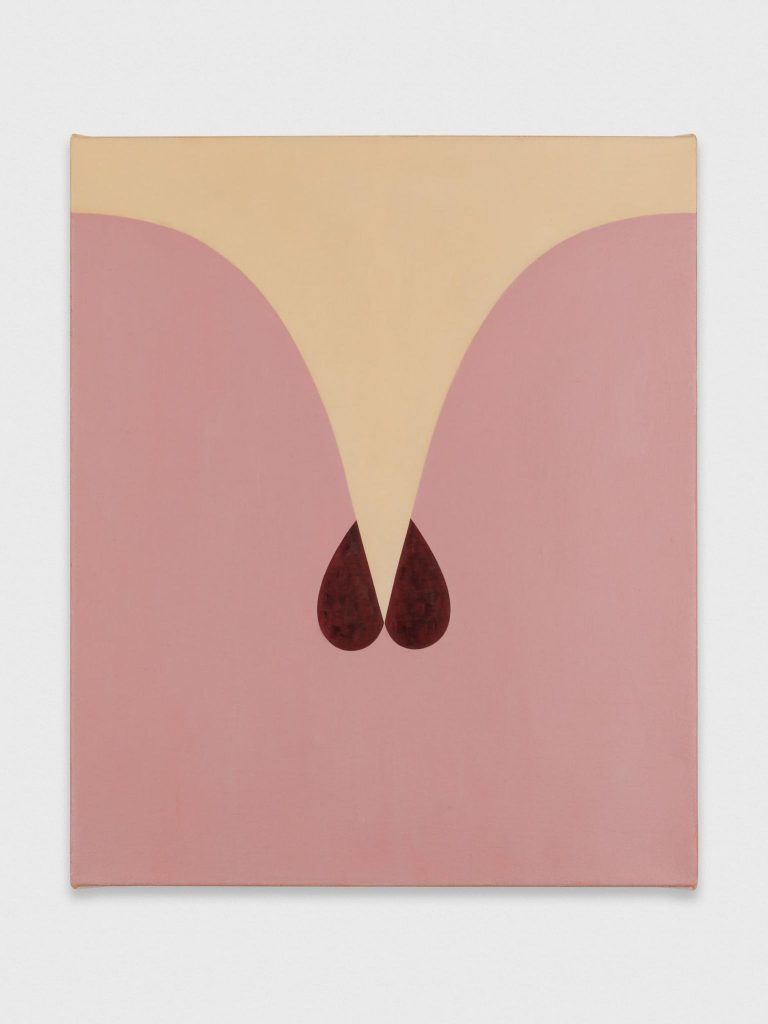[=== TB === BOARD === INTERVIEW === TO === THE = ARTIST ====== ALICE === TIPPIT ==]
INTERVIEW TO ALICE TIPPIT
Claudia Santeroni
Claudia Santeroni – We ask you all artists to give a brief description of your artistic research, in order to introduce you even to those who don’t know your work.
Alice Tippit – My artistic practice is focused on language and the mutability of meaning. Visual language is of particular interest to me, as I think it allows for a more open ended experience than written language. My images appear simple – the use limited color and flattened shapes and are reminiscent of graphic design and other forms of visual communication – but I have adopted strategies to increase the ambiguity of their content. Familiarity is retained, often shapes are recognizable, but not defined any more than necessary. The lack of descriptive information increases their connotative power. I have other tricks: shifting the scale, unsettling figure/ground relationships and unusual color choices come to mind as considerations while I am working on an image.
CS – Looking at your works, Enzo Mari’s silhouettes come to my mind, but you prefer ambiguity to his immediate readability.
Which are your main references outside the universe of Contemporary Art?
AT – Yes. The power of Enzo Mari’s silhouettes is in their simplicity. He removes detail and retains only that which is essential for recognition, but you are never in doubt as to what you are seeing He allows the viewer to fill in the detail for themselves. It’s very generous, and I think that is the source of their charm. I also reduce identifying information, but further of course, and then I will complicate the image through the means I’ve mentioned, in pursuit of what I like to think of as a both and neither rather than yes or no image.
I’ve always been a reader, with a preference for short stories and poetry. Images often come to me while I read, and I try to document them, many eventually become paintings. Lydia Davis is one of my favorite authors and a huge influence. Her essays on her influences and the practice of writing are wonderful. It should be no surprise that I find the terseness of her short stories compelling. Joan Didion has been a comfort during the pandemic. But really I’m a cultural omnivore, I’ll take anything in because you never know what will be useful later on.
CS – I have never seen your works in person and I was amazed to read that when seen in person they are much more painterly than how they appear on a screen. What is your approach to documenting your work, and how do you manage the difference between virtual and actual appearance?
AT – Good documentation helps, and hopefully people go to see the work in person. The surface quality does not come across in digital images very well, especially when you get down to the level of Instagram. My paintings definitely come across much differently in person. There is variation in large fields of color, with visible brush marks; not terribly ragged or unfinished in comparison to the digital version, but my handiwork is apparent. They obviously come from someone rather than somewhere. Consequently the in-person experience of them is slower and more empathetic than it would be were they made through some kind of mechanized and repeatable process, like printing. While it is important to me that they appear to be the work of an individual manipulating the levers of visual language; I don’t think that the work falls apart without that being part of the equation. An image will still do its work on you, visible traces of manufacture or no.
CS – Your works are studded with references to the female universe, often in relation to the natural environment. The image you chose for our newsletter is an example, as well as the text you wrote.
Is there a particular reason you opted exactly for that work?
AT – The history and genres of painting itself operate as a kind of library that I’m able to reference. I might draw upon and cross still life with portraiture for instance, or—as with the one I chose for your newsletter—landscape and figure painting. There is the common thread of belief existing across many cultures that aligns women with the earth. I also think about the literary blazon, a poetic device that compares a lover’s—usually female—attributes to beautiful and rare objects or natural phenomena. The comparison alone isn’t of great interest to me, it’s the rhyming—thinking poetically here—using shapes that echo each other formally, in order to bring together references to create a pictorial dissonance that aids in resisting an immediate interpretation.
CS – Just a curiosity: is there anything essential to you while working? Some music in the background, the silence, the presence of a pet… It’s amazing to imagine artists immersed in their ateliers.
AT – I prefer silence though sometimes I listen to music or a podcast, depending on my mood. Sometimes I want to occupy my mind while I work, but most often I prefer to let my mind drift while I work.
